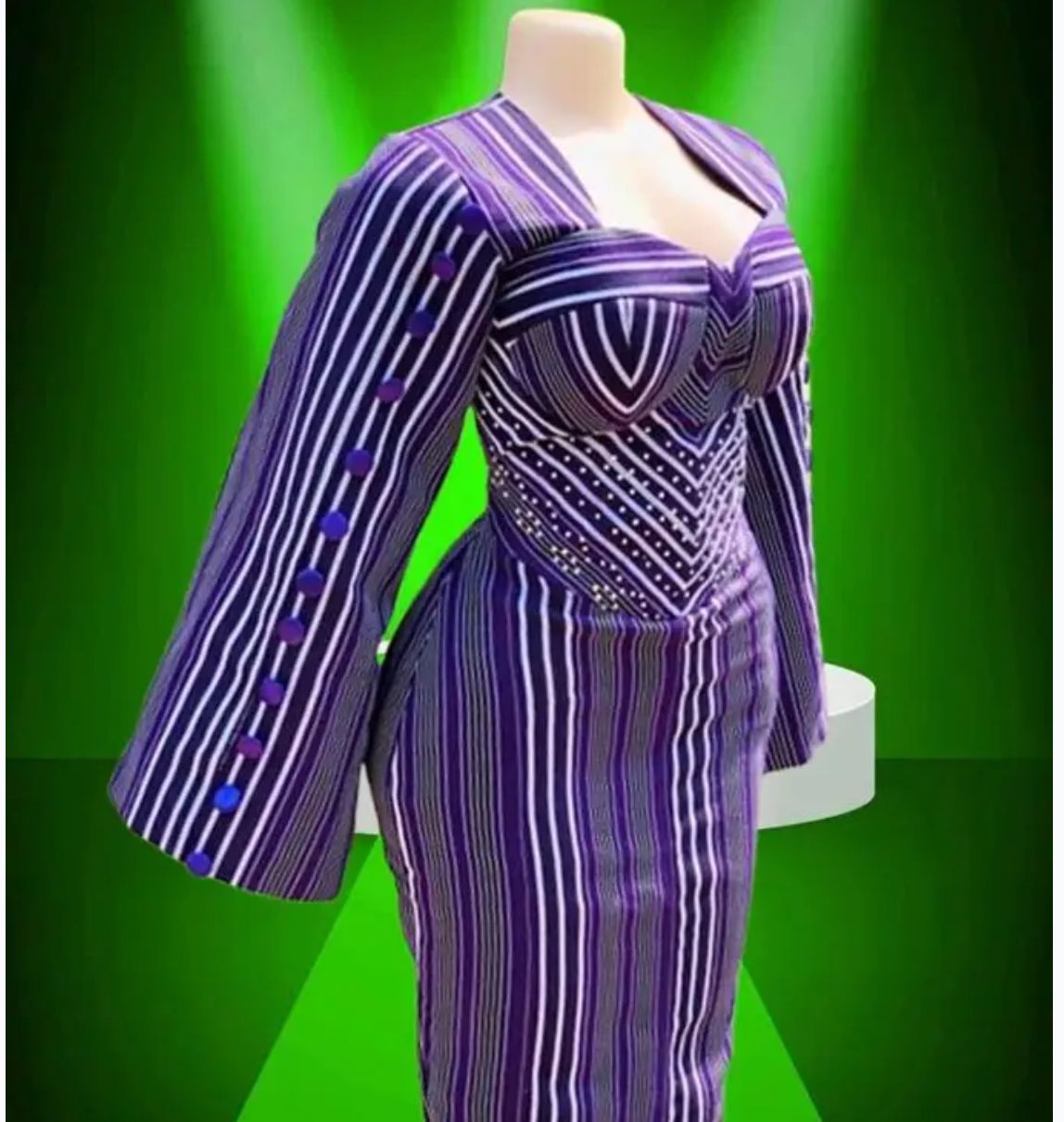The Wavy Collection by Suliat Omolara Fashion & Styles, designed by the visionary fashion designer, Suliat Omolara Abdullahi, presents a vibrant array of Fashion pieces that highlight the designer’s ability to work with bold prints and traditional African textiles.
The collection’s emphasis on Quality Ankara fabric speaks to a strong cultural identity, and the designs demonstrate a clear commitment to celebrating African heritage through fashion. However, while the collection is visually striking and culturally significant, there are areas where the designs could benefit from further refinement and innovation to elevate its impact. Below are some constructive suggestions to enhance the Wavy Collection.
- Fabric Diversity and Innovation
While the use of Ankara fabric is central to the collection, there could have been more diversity in the choice of fabrics. Ankara is undeniably iconic in African fashion, but the heavy reliance on this one textile can risk limiting the range of textures and visual appeal within the collection. Incorporating complementary fabrics like silk, chiffon, or even sustainable, eco-friendly materials could have added depth and variety to the pieces, allowing the Ankara fabric to stand out even more. A blend of fabrics can also enhance the comfort, wearability, and versatility of the garments, ensuring they cater to a broader range of tastes and occasions.
- Silhouette Variation and Fit
The collection seems to rely heavily on certain silhouette styles, such as fitted dresses and peplum tops. While these silhouettes are classic and flattering, the lack of variety in shape and form could make the collection feel somewhat predictable. Experimenting with a broader range of silhouettes—such as asymmetrical cuts, looser, more relaxed fits, or even avant-garde shapes—would introduce more excitement and creativity to the collection. A mix of structured and fluid designs would give the collection a more dynamic range, appealing to a wider audience and showcasing the designer’s versatility.
Additionally, while the designs show an awareness of the human form, the fit of some pieces could be improved to ensure they complement various body types. Pay attention to tailoring details, particularly for larger sizes, to ensure that the pieces flatter and enhance the natural shape of the wearer. The quality of fit is crucial to the overall polished look of a collection, especially when using a fabric like Ankara, which can sometimes be challenging to work with due to its stiffness and bold patterns.
- Color Palette and Print Coordination
The color choices in the wavy Collection are bold and expressive, staying true to the vibrant spirit of African fashion. However, there are moments when the use of multiple contrasting colors in one garment can feel overwhelming, particularly with Ankara’s busy prints. The combination of clashing colors and patterns could be more carefully curated to create a more balanced and cohesive look. It might be helpful to streamline the color palette for each design, using complementary tones to enhance the prints rather than competing against them.
Alternatively, a well-considered approach to monochrome or tonal patterns could make some of the designs feel more sophisticated and elegant, allowing the craftsmanship and fabric details to take center stage without the risk of visual overload.
- Textural Contrast and Fabric Layering
The addition of texture and layering within the collection could have been more emphasized to create visual interest and dimension. While the Ankara prints are striking, the lack of contrasting textures—such as leather, denim, or sheer elements—could have limited the visual depth of the collection. By incorporating textural contrasts through layering techniques or by experimenting with different fabric finishes, the collection could achieve a more multidimensional and visually stimulating effect.
For example, pairing Ankara with a contrasting fabric like sheer tulle or velvet would add a touch of sophistication and innovation. The play between opaque and transparent fabrics could create a dynamic and unexpected element in the designs, offering a fresh perspective on traditional African textiles.
- Sustainability and Ethical Practices
In today’s fashion landscape, sustainability has become an increasingly important consideration. The Wavy Collection could benefit from a greater focus on sustainable practices, both in terms of fabric sourcing and production methods. Integrating eco-friendly materials, promoting ethical labor practices, and exploring upcycled or repurposed fabrics would not only add a forward-thinking element to the collection but also position Suliat Omolara Fashion & Styles as a brand that is socially and environmentally conscious. Fashion is evolving, and it’s crucial for designers to consider their impact on the planet and society, which would give the collection a sense of responsibility alongside its cultural relevance.
- Accessories and Styling
While the pieces in the Wavy Collection are striking on their own, the overall styling of the collection could have been more thoughtfully considered to enhance the garments. Accessories play a pivotal role in storytelling and can transform the visual impact of a piece. Incorporating complementary accessories such as statement jewelry, shoes, or headpieces inspired by African craftsmanship could have further amplified the collection’s cultural significance while providing a complete, stylized look.
For example, introducing handcrafted, bold earrings or intricately designed headwraps would offer a more holistic visual experience. Styling could also experiment with more diverse types of footwear, moving beyond basic heels to include sandals or boots that better reflect the varied personalities and lifestyles of the women wearing the collection.
- Marketability and Versatility
While the collection certainly speaks to a specific cultural demographic, adding more versatile pieces for everyday wear could expand its market reach. Many of the garments, while beautiful, appear geared towards formal events or high-end occasions. Introducing more ready-to-wear options, such as casual Ankara dresses, skirts, and blouses, would allow the collection to cater to a wider audience, from working professional to the casual fashion lover. More accessible price points could also increase the appeal to a broader market, especially for younger consumers who may not have the budget for more couture-style pieces.
Conclusion
Overall, the Wavy Collection by Suliat Omolara Fashion & Styles is a testament to Suliat Omolara Abdullahi passion for showcasing African heritage through modern fashion. The vibrant use of Ankara fabrics and the clear cultural nods are commendable, but there is room for growth in terms of fabric diversity, silhouette variation, and overall cohesion. By incorporating more innovative design elements, experimenting with textures, and considering sustainable practices, the wavy Collection could elevate its status to become a hallmark of contemporary African fashion that resonates both locally and globally. The potential is certainly there, and with a few adjustments, it could make an even more significant impact on the fashion industry.






